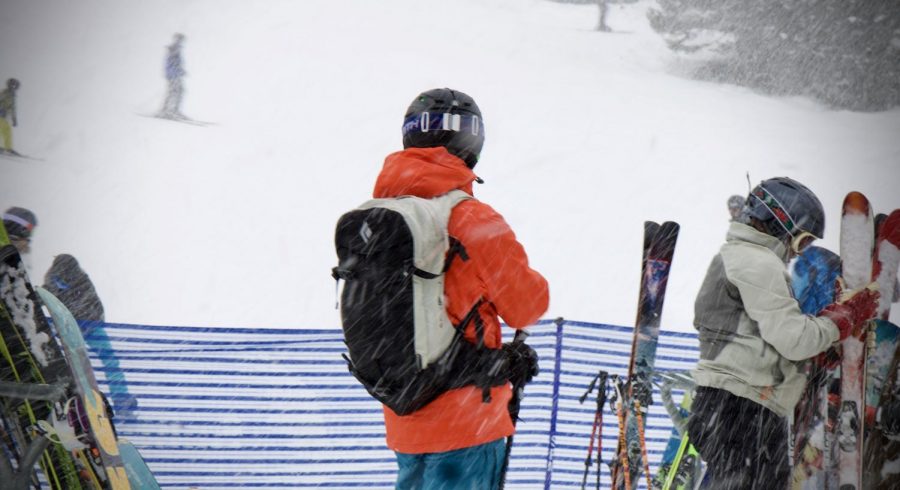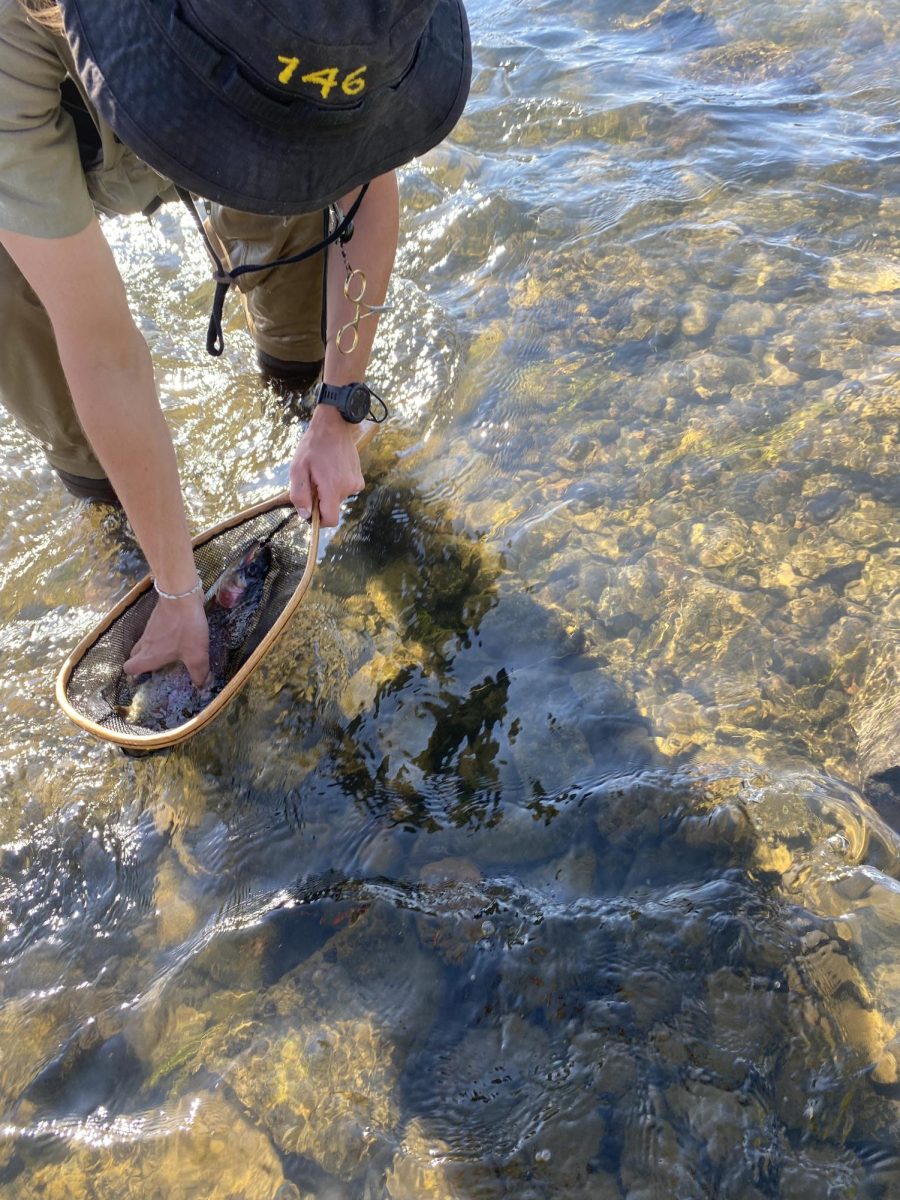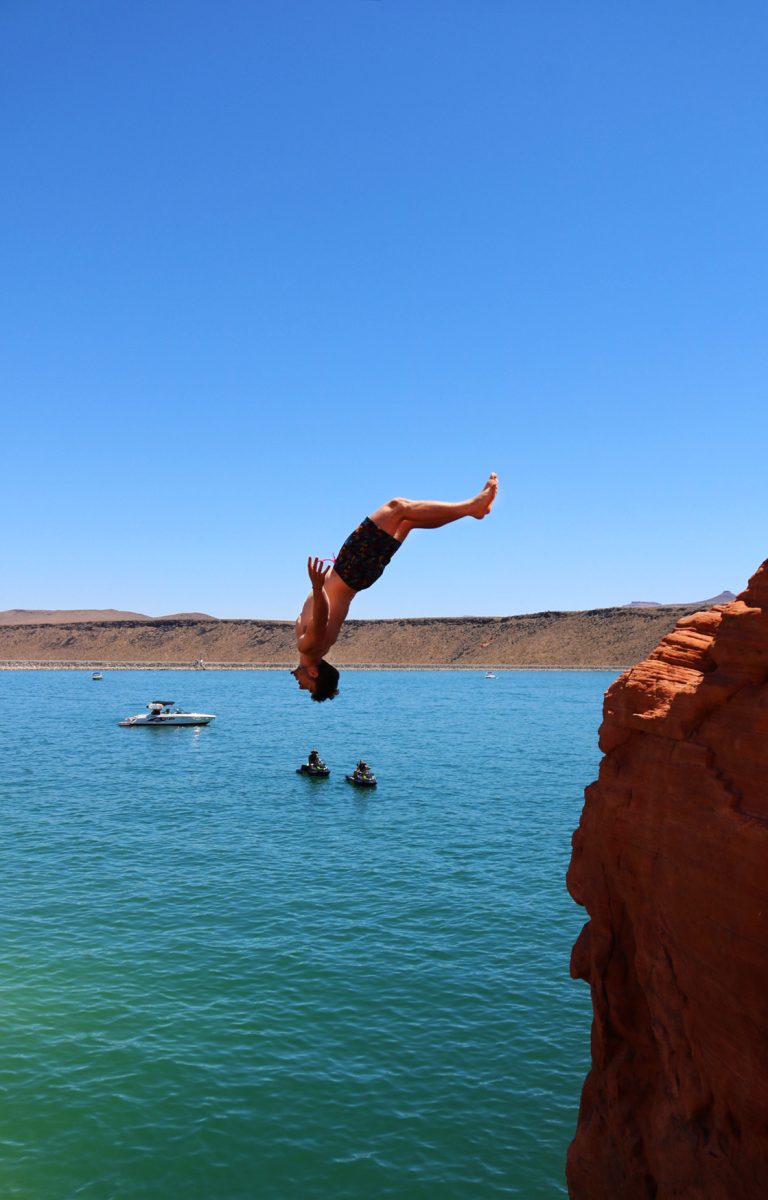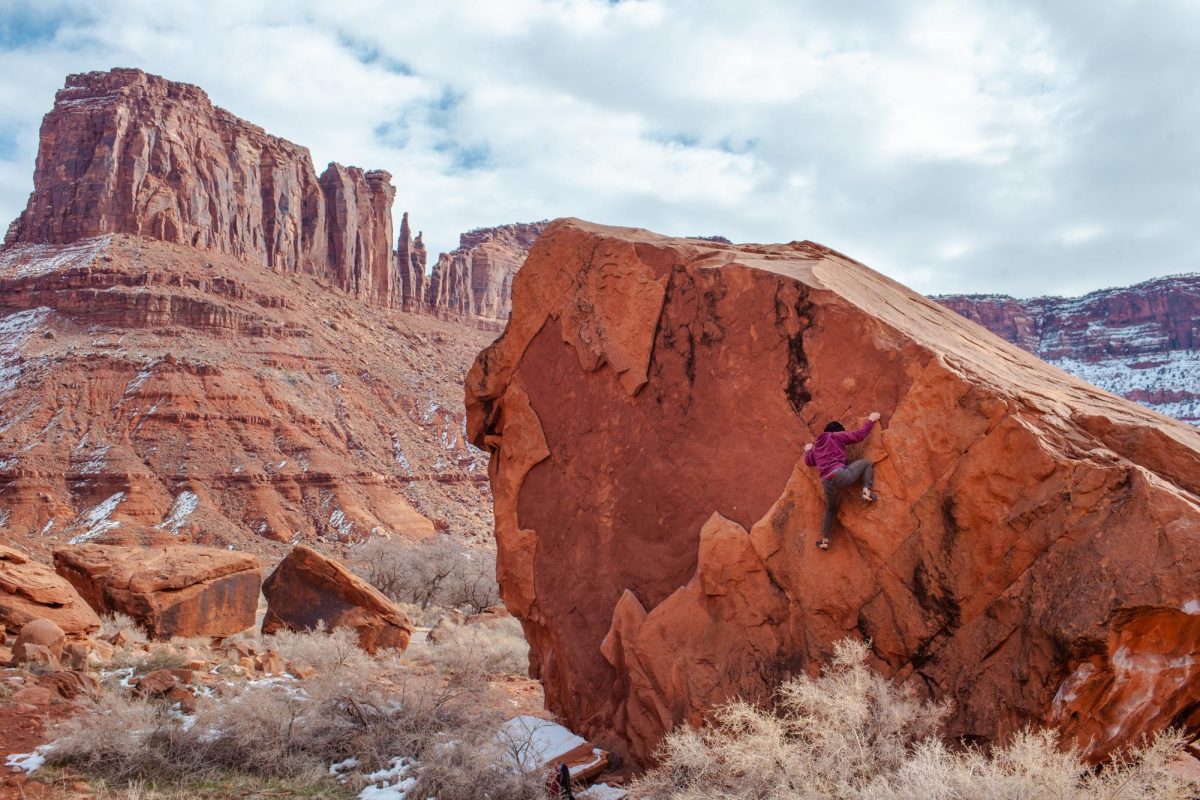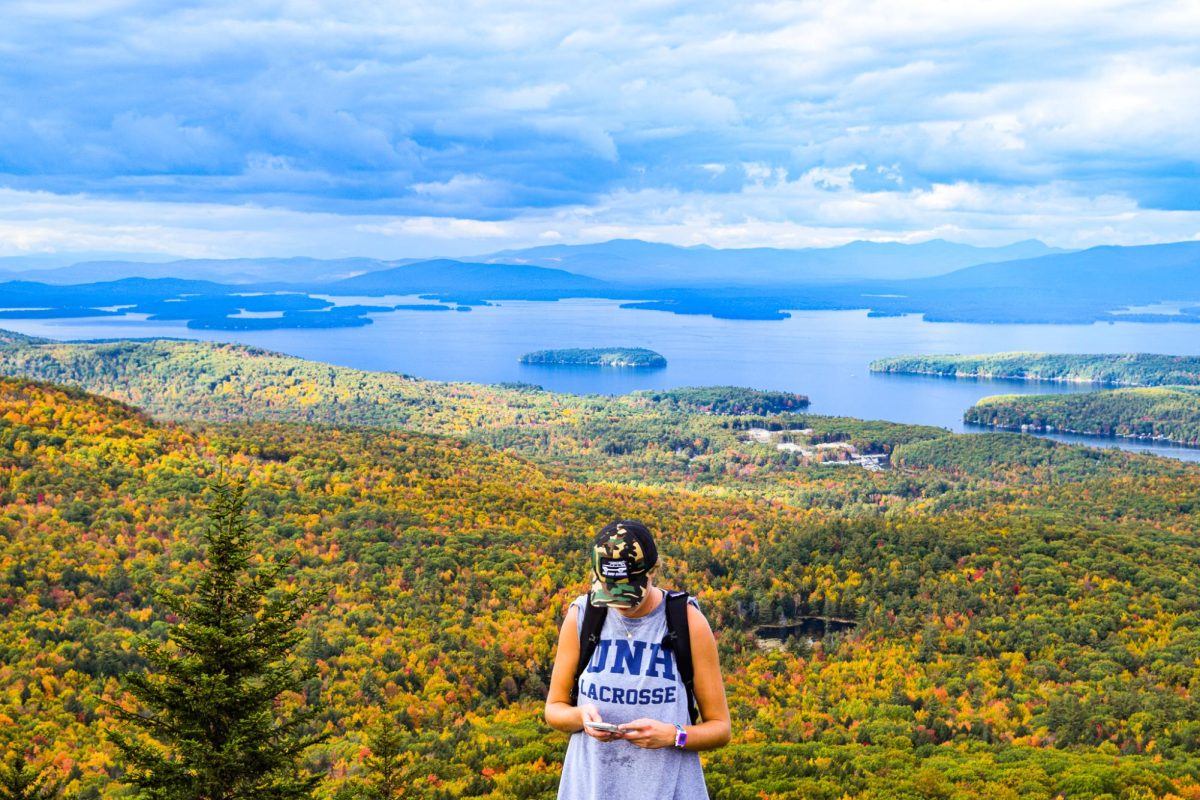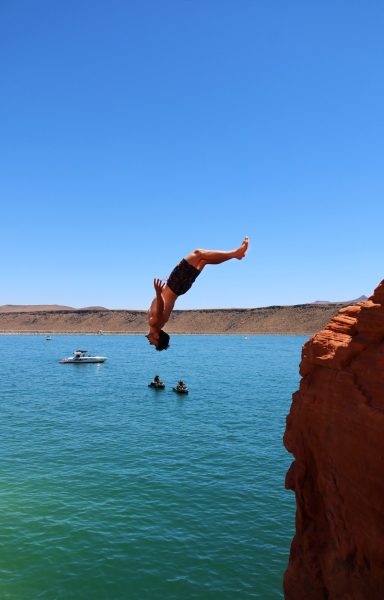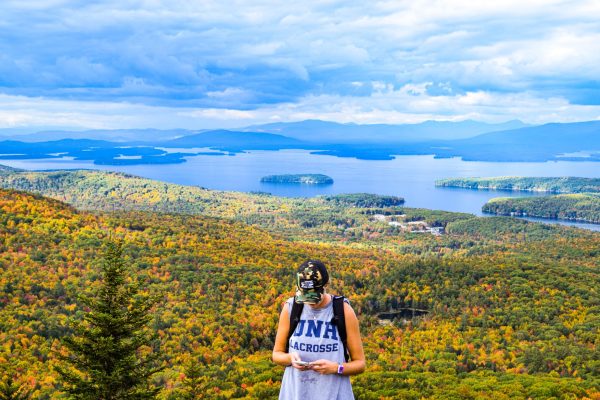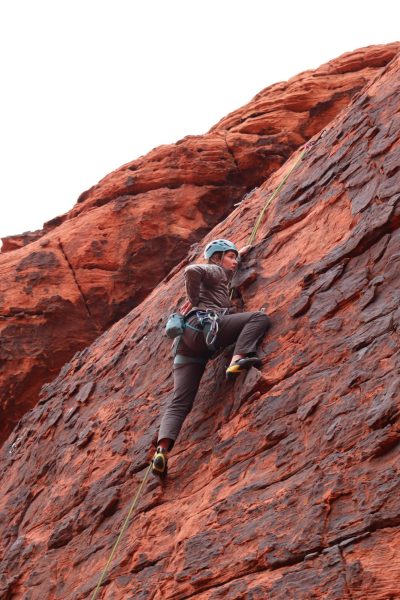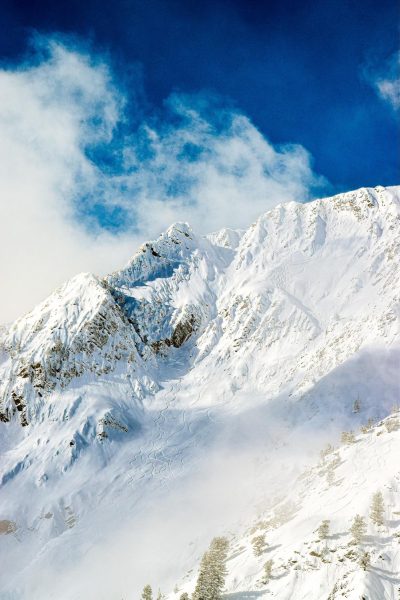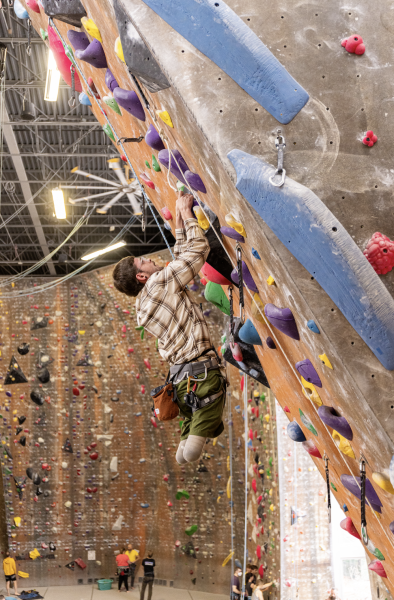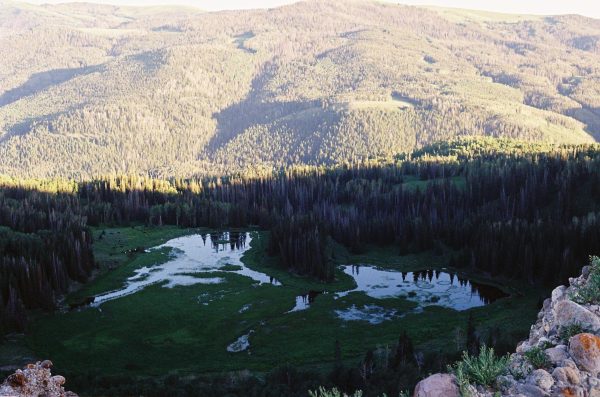The Humble Brain Bucket
February 17, 2020
Many changes have come to skiing and snowboarding over the years, but few have radically changed ski culture the way that the ski helmet did. Wearing a helmet has become so normal that when people choose not to wear a helmet, it’s seen as needlessly risky behavior. This is a complete shift from how winter sports historically viewed head protection, which was previously mostly used by ski racers. While ski jumpsuits and other trends have come in and out of vogue, helmets are here to stay.
Although head injuries make up a small portion of all ski and snowboard injuries, it’s well known throughout the literature on ski and snowboard helmet use that head injuries are the leading cause of hospitalizations and deaths in both skiing and snowboarding. As skis and boards have become more technical, the average speed of people on the mountain has increased. While thrilling, this increase in speed has come with an increase in severe head trauma.
Studies that look at helmet usage and head injuries generally conclude that ski and snowboard helmets provide significant protection from head injuries. A 2018 study in the Journal of Wilderness and Environmental Medicine further found that ski and snowboard helmet wearers experience both less head and body injuries, which goes against the thinking that wearing a helmet makes you more likely to take risks while on the mountain. The recommendation across studies is clear — wearing a helmet while skiing or snowboarding is an important step in injury prevention, and you should wear a ski helmet regardless of what terrain you’re taking on or your ability level.
As to what helmet you should choose, most ski and snowboard helmets follow a basic format. A typical ski helmet is made of expanded polystyrene foam bonded to high-impact plastic. The foam is akin to packing styrofoam and it compresses to help absorb impacts while the plastic prevents objects from penetrating the foam — or your head. This combination provides protection for injuries like lacerations, concussions, severe traumatic brain injuries, and skull fractures.
MIPS, or the Multi-directional Impact Protection System, is a technology that adds a plastic cage within the helmet that allows for your head to rotate within your helmet on impact. This is supposed to expand the protection given by your helmet. While initial testing has shown good results, there has yet to be any real study of how effective MIPS ski and snowboard helmets are.
When choosing your own helmet, proper fit is essential. Your helmet shouldn’t perch on the top of your head, nor should your head knock around inside. You want your helmet to fit snugly (so be sure and keep any hats you may want in mind ) and you want to make sure your chin strap is snug against your chin (even over or under a neck gaiter) so your helmet doesn’t pop off when you need it most. To ensure you have a good-fitting helmet, I’d recommend going to a ski/snowboard shop with the layers you plan on using on your head and neck and having someone help you find the right size of helmet for you. If you can, buy a new helmet so you know that no impacts have been taken by your helmet in the past.
You should replace your helmet after any solid hit — because the integrity of the foam inside will be compromised and won’t protect you as well in the future — or every five years, as the foam starts to break down with use. When you replace your helmet for these reasons, you should make sure your old helmet doesn’t go back into circulation. Feel free to take a hammer to your old helmet, so it clearly cannot be used again. Deconstructing your helmet can also help you sort its components for recycling. Unfortunately, there aren’t any local options for recycling whole helmets, so my suggestion is to contact your helmet’s manufacturer and see what they can do to help you recycle your helmet. At the very least, you’ll help companies know that there’s a need for helmet recycling options. Please don’t drop a helmet that’s no longer good at a thrift shop or re-sell it — you could put someone else at greater risk of a head injury.
Ski and snowboard helmets are already preventing many head injuries around the world, but the truth is that they need further development to comprehensively do their job. Ski and snowboard helmet safety ratings are currently only for impacts below the average speed of a skier or snowboarder and data about helmet effectiveness at higher speeds is very limited. A helmet is not a guarantee of head safety on the mountain, but it is an important part of taking safety measures. The best strategy for protecting your head combines using a helmet with slowing down, skiing with control and avoiding obstacles to the best of your ability.

